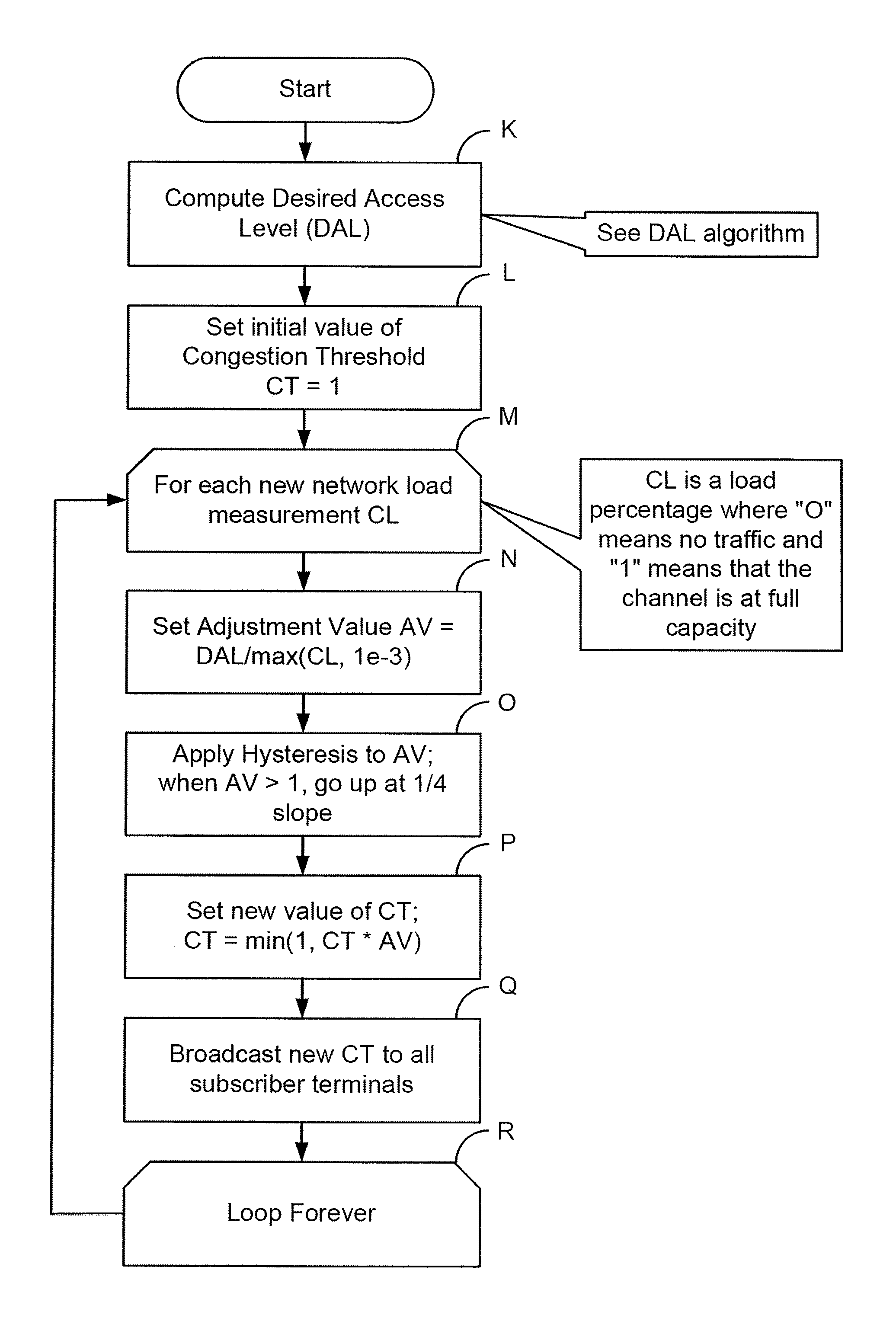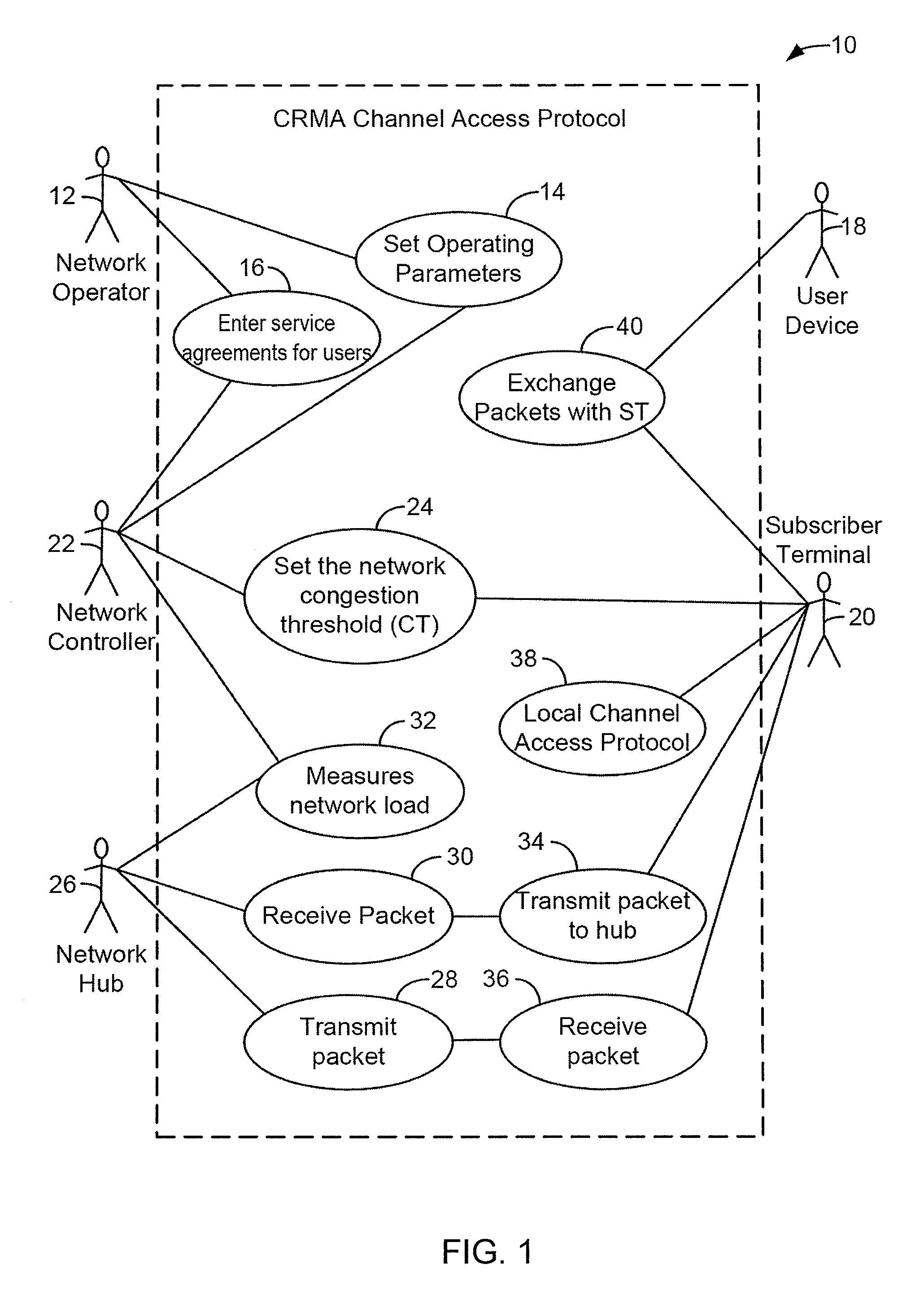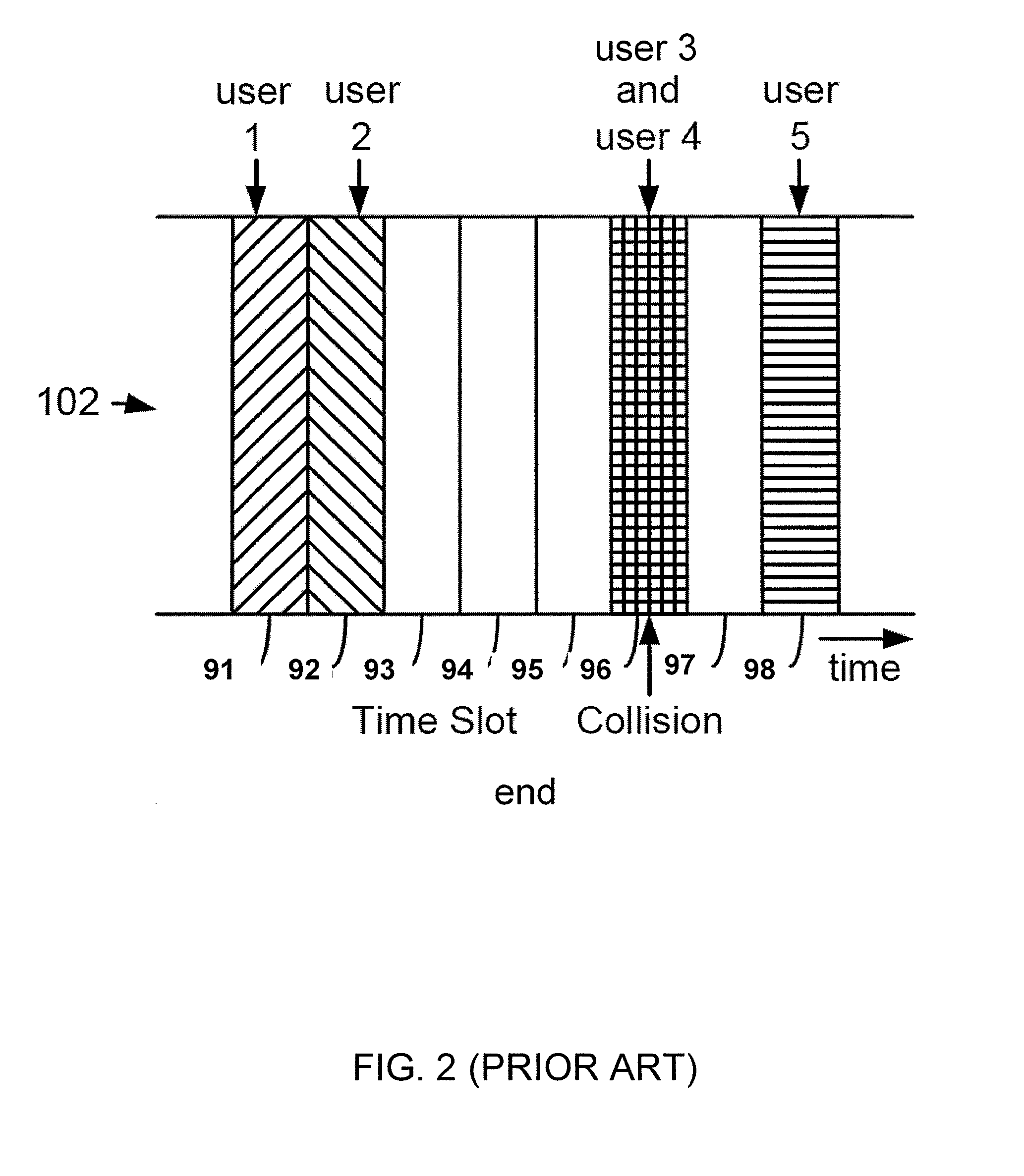Method for channel congestion management
a channel congestion and channel management technology, applied in the field of bandwidth resources management, can solve the problems of reducing efficiency of collisions between two or more transmissions, deficiency of known traffic management schemes when applied, and protocol not directly applicable to multiple-simultaneous-user environments, so as to mitigate channel congestion, mitigate against the clogging of virtual downstream channels, and balance channel load
- Summary
- Abstract
- Description
- Claims
- Application Information
AI Technical Summary
Benefits of technology
Problems solved by technology
Method used
Image
Examples
Embodiment Construction
[0072]FIG. 1 is an overview in a Use-Case diagram 10 which illustrates schematically each of the components of the invention and each of the cases in which the components or “actors” participate.
[0073]The actors include:
[0074]Network Operator 12: The Network Operator 12 is the entity including the people and business concerns of a service provider (SP) that set the service policies (including quality of service (QOS) parameters) including the services of setting of operating parameters 14 and entering service agreements 16 for users of user devices 18 and subscriber terminals 20.
[0075]Network Controller 22: The Network Controller 22 is the service in the form of computer software which computes a congestion threshold (CT) using parameters set by the Network Operator 12 and based on the measurements taken by a Network Hub 26.
[0076]Network Hub 26: The Network Hub 26 comprises the communications equipment (antennas, radios, modems and software) which transmits packets 28 and receives p...
PUM
 Login to View More
Login to View More Abstract
Description
Claims
Application Information
 Login to View More
Login to View More - R&D
- Intellectual Property
- Life Sciences
- Materials
- Tech Scout
- Unparalleled Data Quality
- Higher Quality Content
- 60% Fewer Hallucinations
Browse by: Latest US Patents, China's latest patents, Technical Efficacy Thesaurus, Application Domain, Technology Topic, Popular Technical Reports.
© 2025 PatSnap. All rights reserved.Legal|Privacy policy|Modern Slavery Act Transparency Statement|Sitemap|About US| Contact US: help@patsnap.com



